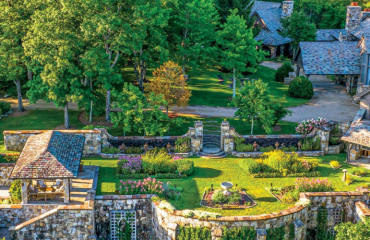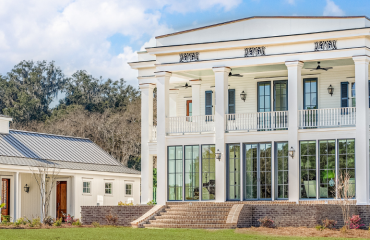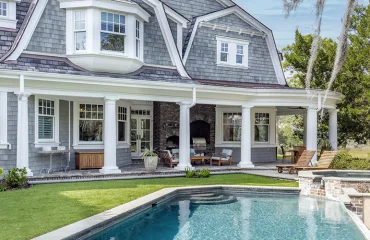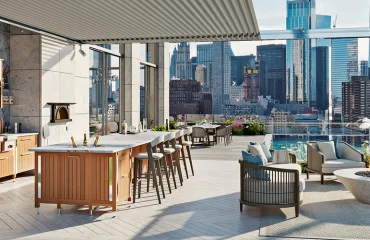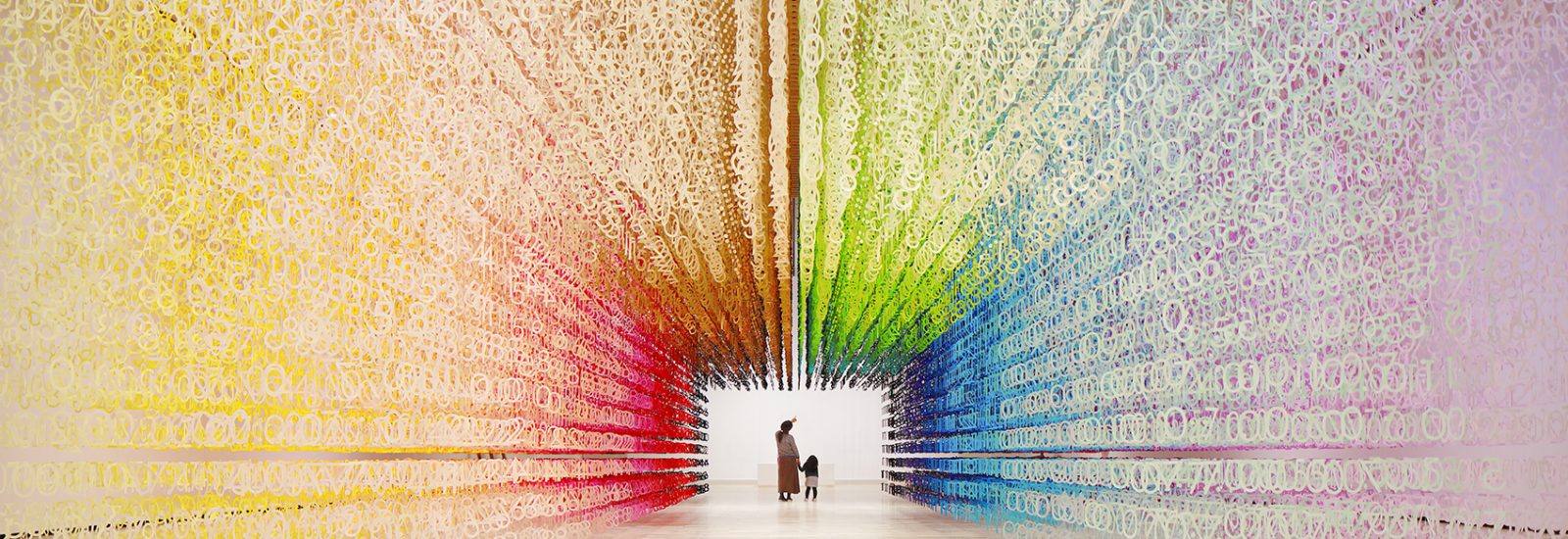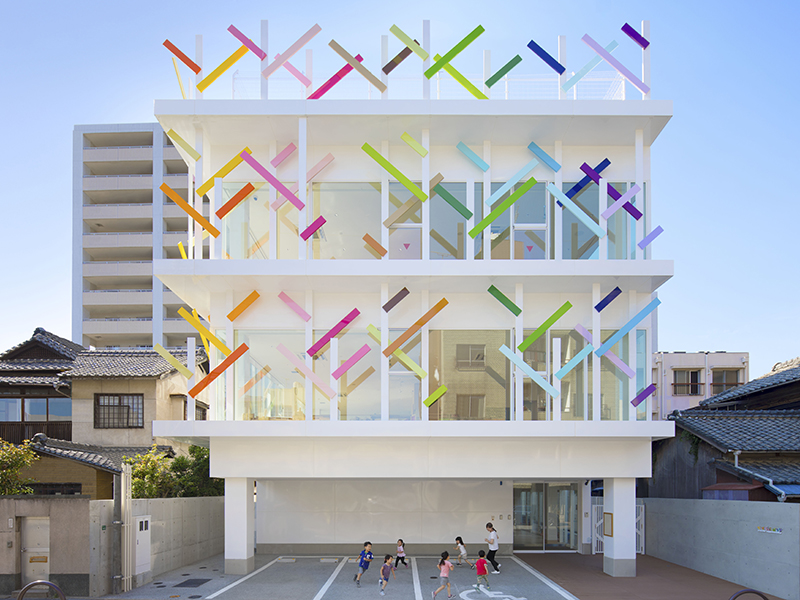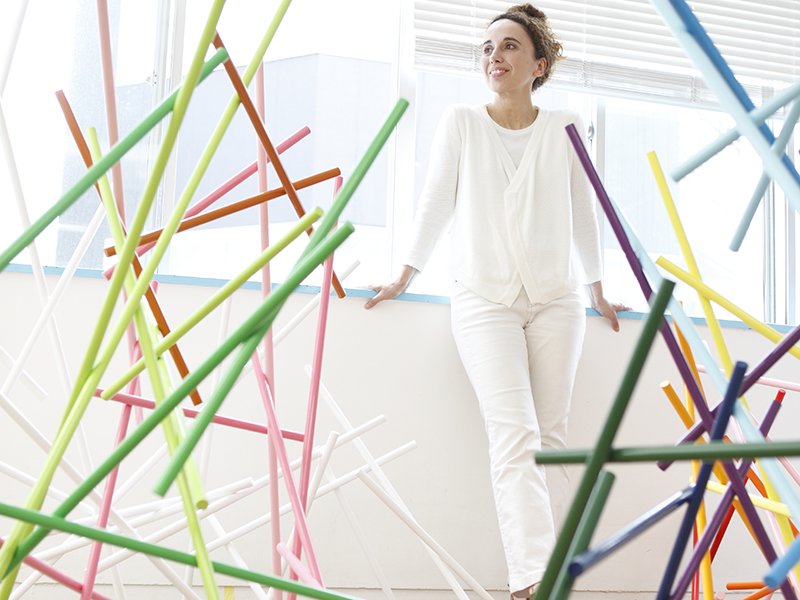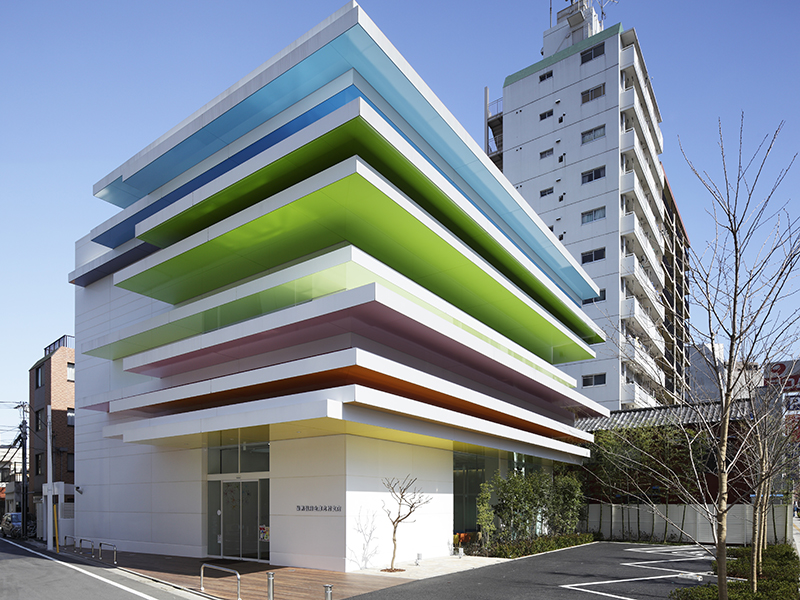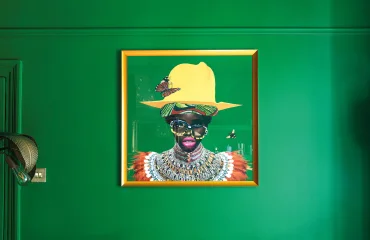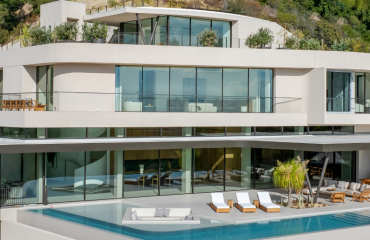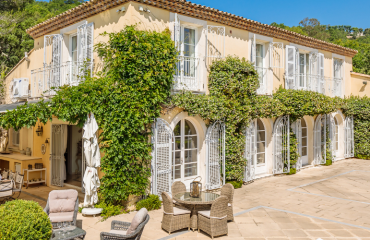Explain the idea behind your recent Color of Time installation, part of the 100 Colors series, at Toyama Prefectural Museum of Art & Design…
Color of Time visualizes the flow of time through a journey through 100 colors. It starts with the sky of Toyama on the first day of the exhibition, on November 16, 2017. From sunrise at 6:30am, the color transitions through a total of 799 minutes, passing 6:11pm astronomical twilight to 7:49pm when the color disappears into blackness.
What unites your architecture and design work?
My design concept shikiri, which means defining space with colors. I use colors as three-dimensional elements, like layers, in order to create spaces, not as a finishing touch applied to surfaces. I am always moving between different scales.
Color can define space, but it also inspires emotion. Most importantly color makes people happy
How do you begin working on a project?
First I decide on the number of colors I will use, depending on the function, site, and my inspiration.
